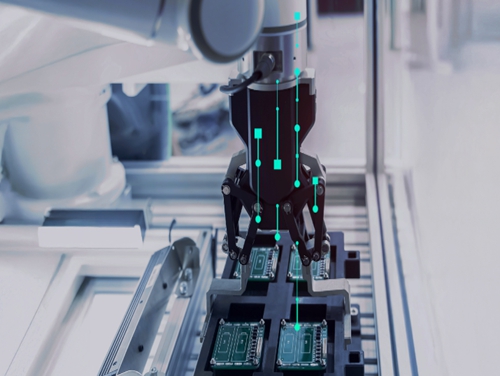Today, global industries are undergoing a "software-defined" transformation, which is not only reshaping the form and functionality of products but also opening up new frontiers for
enterprise innovation.
Take the automotive industry as an example. Remote software updates have become the norm—improving vehicle performance, introducing new features, and fixing issues without
requiring a visit to a service center. This software-defined vehicle platform not only precisely addresses user pain points but also creates unique product differentiation through continuous
feature iteration, redefining the core dimensions of industry competition.
This article will delve into how software-defined development is disrupting enterprise product and system R&D models, and how comprehensive digital twins support these new developmen
t approaches—particularly through electronic design automation, seamless connectivity through the digital thread between software and systems, and building a development paradigm
adapted to the new era.
The Complexity Challenge of "Software-Defined" Products
The development of software-defined products faces unprecedented complexity. Any minor adjustment to software functionality can trigger a chain reaction. For example, optimizing the
behavior of an electric vehicle's onboard software can alter the computing platform's power consumption, thereby affecting the vehicle's range. If the range change is significant, it could
even force a redesign of the battery size and even adjustments to the vehicle's physical layout.
The intense focus on software development and differentiation has profoundly impacted the architecture of R&D projects, particularly in the semiconductor device sector, which provides
the computing power to power software features. Traditionally, companies often selected off-the-shelf chips that met basic requirements, and software development was often constrained
by the capabilities of general-purpose hardware platforms. However, with the increasing complexity and strategic importance of software systems, more companies are seeking customized
semiconductor solutions that are both tailored to specific software workloads and capable of co-designing hardware and software.
In the past, custom chip development was out of reach for most companies due to its long development cycles, high costs, and significant risks. Today, semiconductor manufacturers are
significantly shortening development cycles through key innovations such as heterogeneous integration. This allows them to combine cost-effective off-the-shelf technologies with smaller,
more economical, and less risky custom chip modules, achieving the optimal balance between performance and cost.
Digital Twins Empower Global Software-Driven Development
Beyond semiconductor devices and modules, complex system manufacturers must consider the concurrent development and integration of multiple subsystems: software applications and
underlying infrastructure, electrical and electronic systems including data networks, and mechanical components and structures.
Achieving this goal requires not only integrating diverse engineering technologies and solutions but also seamlessly integrating them into a coherent, user-friendly end product with a
superior user experience. Even more challenging, companies must accomplish this task under the dual pressures of shrinking budgets and ever-tightening schedules to stay ahead in an
increasingly competitive market.
These pressures are driving companies to build new, interconnected, agile, and collaborative development systems that facilitate the seamless flow of information among cross-functional
teams. They also require increased investment in digitalization to create digital twins that span the entire product lifecycle. This comprehensive digital twin, encompassing complex products
or systems, leverages digital thread technology to connect all product models and data, providing developers with a unified visualization platform that clearly displays the multi-dimensional
coupling between software layers, electronic architectures, and mechanical components. This real-time synchronization mechanism effectively avoids the high coordination delays associate
d with traditional development, ensuring that every dimension of the product evolves in sync with dynamic requirements and evolving regulatory standards.
Supply chain managers, software engineers, and mechanical designers can interact in real time within a shared digital ecosystem, streamlining the validation process and ensuring that any
modifications do not introduce unforeseen complexities. Early process planning, modeling, and verification based on the product's digital twin can significantly improve manufacturing
readiness. This collaborative, global approach reduces development risk, improves R&D efficiency, and enables companies to bring high-quality, cutting-edge products to market faster.

Semiconductor Virtualization Ushers in a New Era of Shift-Left Development
Virtualizing the semiconductor development and verification process is also crucial for software-defined products or systems. Traditionally, software teams must wait for physical hardware
prototypes to be ready before testing begins, which not only slows development cycles but also increases project risks. Digitalization is paving the way for the virtualization of semiconductor
architectures, decoupling software and hardware development, enabling software development to begin before physical semiconductor devices enter manufacturing—the core essence of
the "shift-left" strategy in the software-defined era.
This virtualization technology enables teams to proactively resolve software and hardware dependencies, even before the system is fully integrated. As semiconductor models gain increasing
fidelity during development, software teams can continuously update applications to match expected semiconductor performance, minimizing integration errors. This capability also helps
companies leverage the advantages of heterogeneous semiconductor integration—optimizing processor cores, memory configurations, and interfaces to precisely adapt to evolving computing
needs while controlling costs.
Furthermore, a connected digital ecosystem ensures that every update to software and semiconductor specifications is instantly reflected in a comprehensive digital twin of the system. As
software and semiconductor configurations mature, electrical and mechanical teams can design based on the latest information, fully considering the potential impact of software changes
on their respective systems, creating a fully collaborative R&D closed loop.
The growing influence of software-defined products and the increased reliance on software introduce new complexities, necessitating an integrated development approach. As software and
semiconductors further converge, the demand for customized semiconductor solutions is growing—optimizing computing power for specific workloads has become crucial for market
competition. Digitalization, especially comprehensive digital twins, has become a core tool for managing these interdependent links, supporting real-time collaboration and verification
among cross-functional teams, and helping companies gain a commanding position in the future industrial landscape.




